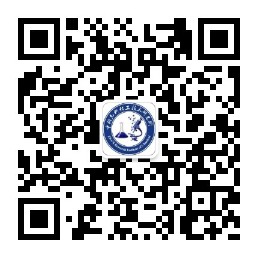歡迎訪問中科光析科學技術研究所官網!
- 聯系我們
- 關注微信

歡迎訪問中科光析科學技術研究所官網!


免費咨詢熱線
400-635-0567|
針織西服檢測項目報價???解決方案???檢測周期???樣品要求? |
點 擊 解 答?? |
本標準規定了服裝及服飾工業常用的術語、定義或說明。本標準適用于服裝和服飾設計、生產、技術、教學、貿易及其相關領域。
本標準規定職業服裝的術語和定義、檢驗分類、檢驗依據、檢驗項目、組批規則和抽樣方案、判定規則和復驗規定。本標準適用于以紡織織物為主要面料成批生產的職業服裝。
本標準規定了電子商務活動中產品核心元數據及其表示方法,給出了電子商務產品核心元數據的擴展規則和方法。本標準適用于電子商務活動中對產品基本信息的分類、編目、發布和查詢。
本標準規定了電子商務交易中服裝類產品信息描述屬性、方法、模型、摘要描述以及擴展方法。本標準適用于電子商務交易中服裝類產品信息的采集、發布、交換、存儲和管理等。
本標準規定了中式立領男裝的術語和定義、要求、檢驗方法、檢驗規則,以及標志、包裝、運輸和貯存。本標準適用于以紡織機織物為主要面料生產的中式立領男裝。本標準不適用于年齡在14歲及以下的嬰幼兒及兒童穿著的服裝。
本標準規定了進出口紡織品檢驗檢疫行業標準的結構和編寫的一般原則。本標準適用于進出口紡織品檢驗檢疫行業標準編寫指導。
本標準規定針織西服產品的產品號型、要求、檢驗規則、判定規則以及產品使用說明、包裝、運輸和貯存。本標準適用于鑒定以針織物為主要面料生產的男、女西服(套)等服裝的品質。本標準不適用于年齡在36個月及以下的嬰幼兒服裝。
本標準規定了風衣的要求、檢驗方法、檢驗規則,以及標志、包裝、運輸和貯存。本標準適用于以紡織機織物為主要面料生產的風衣。本標準不適用于年齡在36個月及以下的嬰幼兒服裝。
本標準規定了洗染業服務質量的術語和定義、服務要求、服務質量;本標準適用于我市行政區域內各種經濟成分的洗染公司、洗染店、洗衣廠及其它從事洗染業的經營單位。
本標準規定了學生服裝的要求、檢驗方法、檢驗分類規則以及標志、包裝、運輸和貯存等技術特征。本標準適用于以紡織織物為原料成批生產的學生服裝。
Flameproof protective clothing are used in the mining to protect against explosions, flames and other flame jets. The document describes the requirement out to DIN EN 469.
This International Standard specifies minimum basic safety requirements and test methods for protective clothing including hoods, aprons, sleeves and gaiters that are designed to protect the wearer's body including head (hoods) and feet (gaiters) and that are to be worn during welding and allied processes with comparable risks. For the protection of the wearers head and feet, this International Standard is only applicable to hoods and gaiters. This International Standard does not cover requirements for feet, hand, face and/or eye protectors.This type of protective clothing is intended to protect the wearer against spatter (small splashes of molten metal), short contact time with flame, radiant heat from an electric arc used for welding and allied processes, and minimizes the possibility of electrical shock by short-term, accidental contact with live electrical conductors at voltages up to approximately 100 V d. c. in normal conditions of welding. Sweat, soiling or other contaminants can affect the level of protection provided against short-term accidental contact with live electric conductors at these voltages. For adequate overall protection against the risks to which welders are likely to be exposed, personal protective equipment (PPE) covered by other standards should additionally be worn to protect the head, face, hands and feet. Guidance for the selection of the type of welders clothing for different welding activities is detailed in Annex A of this International Standard.
This International Standard specifies performance requirements for protective clothing made from flexiblematerials, which are designed to protect the wearers body, except the hands, from heat and/or flame. Forprotection of the wearers head and feet, the only items of protective clothing falling within the scope of thisInternational Standard are gaiters, hoods and overboots. However, concerning hoods, requirements for visorsand respiratory equipment are not given. The performance requirements set out in this International Standard are applicable to protective clothing which could be worn for a wide range of end uses, where there is a need for clothing with limited flame spread properties and where the user can be exposed to radiant or convective or contact heat or to molten metal splashes. This International Standard is not applicable to protective clothing that is specified by other InternationalStandards (see introduction).
This International Standard specifies the performance requirements for the Limited Flame Spread properties of all materials, all material assemblies and protective clothing in order to reduce the possibility of the clothing burning when in occasional and brief contact with small flames and there by itself constituting a hazard. Additional requirements for clothing are also specified, including design requirements, mechanical requirements, marking andinformation supplied by the manufacturer. When protection against heat hazards is necessary in addition to protection against flame, this standard is not appropriate. Standards such as ISO 11612, should be used. A classification system is given for materials, material assemblies and garments which are tested according toISO 15025, Procedure A.
 前沿科學
微信公眾號
前沿科學
微信公眾號
 中析研究所
抖音
中析研究所
抖音
 中析研究所
微信公眾號
中析研究所
微信公眾號
 中析研究所
快手
中析研究所
快手
 中析研究所
微視頻
中析研究所
微視頻
 中析研究所
小紅書
中析研究所
小紅書